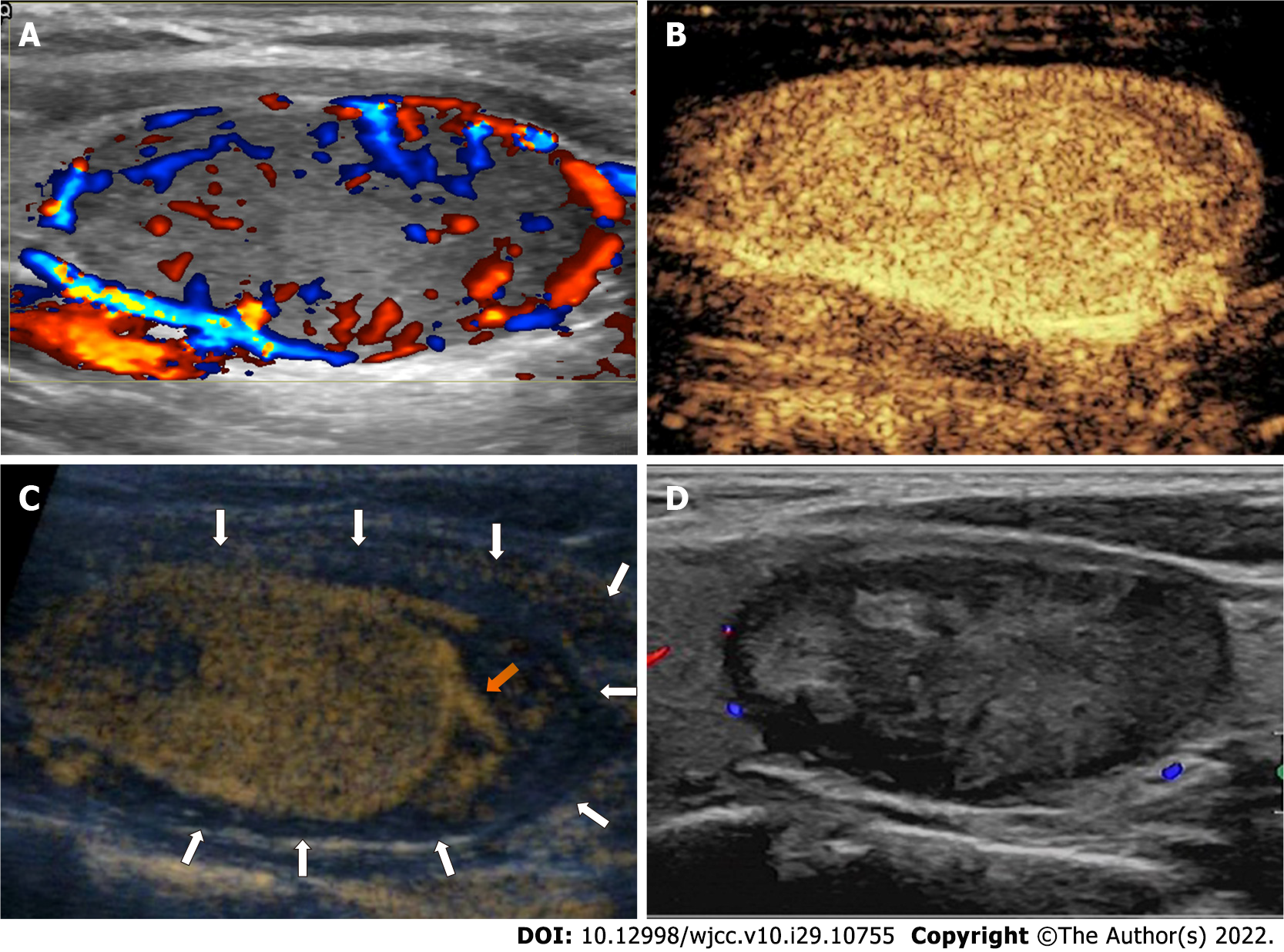Copyright
©The Author(s) 2022.
World J Clin Cases. Oct 16, 2022; 10(29): 10755-10762
Published online Oct 16, 2022. doi: 10.12998/wjcc.v10.i29.10755
Published online Oct 16, 2022. doi: 10.12998/wjcc.v10.i29.10755
Figure 1 Case 1: Female, 21-year-old, with a solid benign thyroid nodule in the left lobe.
A: Color Doppler ultrasonography showed the nodule with marked vascularity and peripheral blood supply; B: Preoperative contrast-enhanced ultrasonography showed the nodule with homogenous hyperenhancement and a peripheral blood supply; C: During the hydrodissection, contrast-enhanced ultrasonography showed a perithyroidal hematoma (white arrow) around the nodule and the active hemorrhage near the location where the needle was placed (orange arrow) after the needle was withdrawn. Compression was placed to achieve hemostasis. Then, radiofrequency ablation was performed to stop the bleeding; D: At the 1-mo follow-up, the perithyroidal hematoma had disappeared on ultrasonography, and the nodule showed shrinkage with a volume reduction ratio of 44.1%.
- Citation: Zheng BW, Wu T, Yao ZC, Ma YP, Ren J. Perithyroidal hemorrhage caused by hydrodissection during radiofrequency ablation for benign thyroid nodules: Two case reports. World J Clin Cases 2022; 10(29): 10755-10762
- URL: https://www.wjgnet.com/2307-8960/full/v10/i29/10755.htm
- DOI: https://dx.doi.org/10.12998/wjcc.v10.i29.10755









